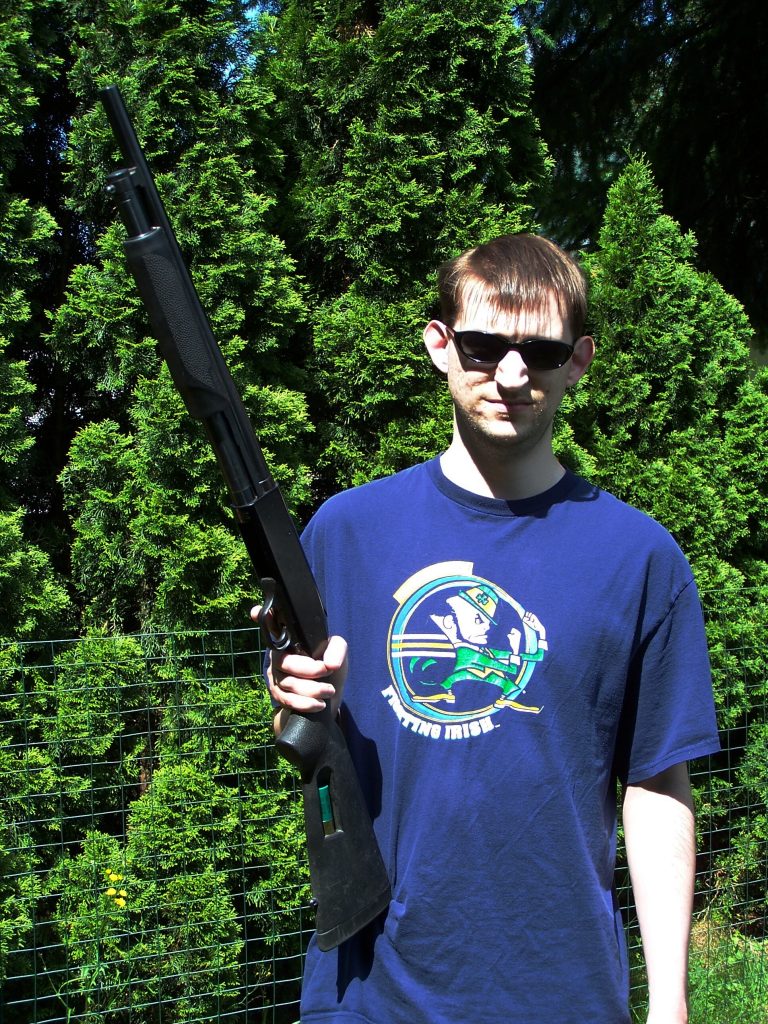
By Dave Workman | Editor-in-Chief
No doubt about it, the Mossberg Model 500 pump-action shotgun has always been a workhorse more than a show horse, which is one of the reasons I bought one decades ago while working for the now-long-gone Fishing & Hunting News, a regional outdoors publication that once was the backbone of Pacific Northwest outdoors news.
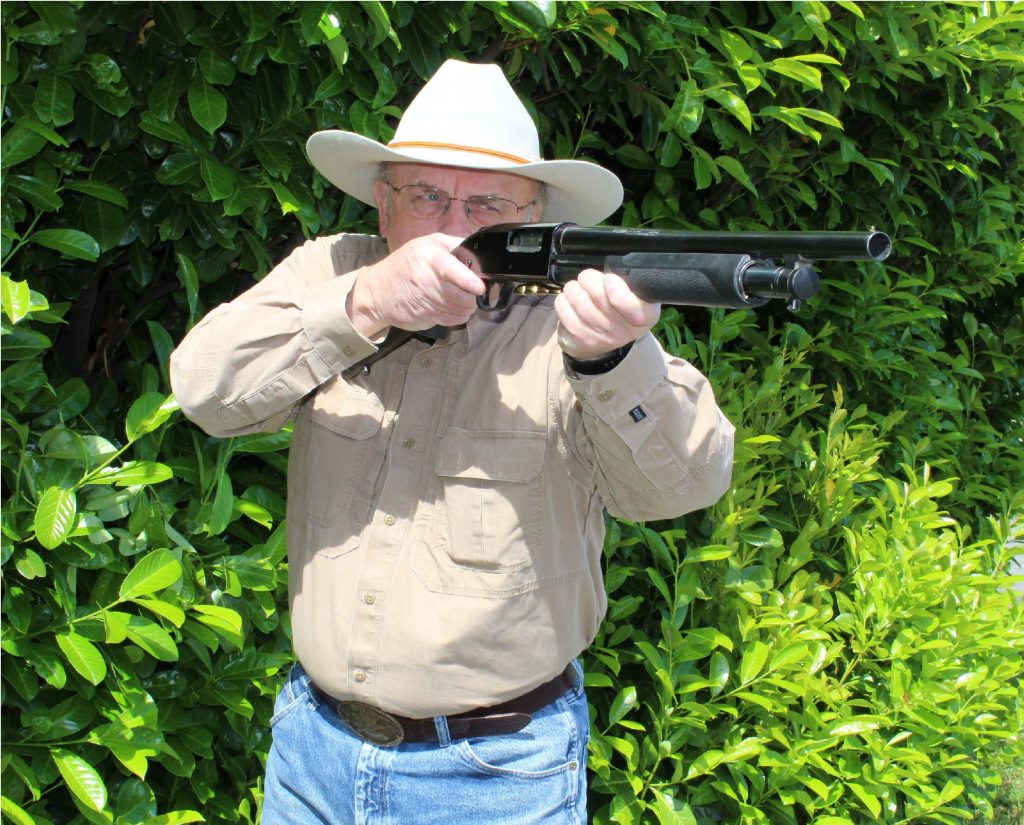
Being a devotee of the double-barrel smoothbore, Mossberg’s pump was impressive when I worked with one while putting together a “gazette” publication about the company and its hardware. My specs were simple. I wanted two barrels, one a vent rib 20-incher with interchangeable chokes for upland bird hunting in thick brush country and the other an 18 ½-inch open choke (fixed cylinder bore) barrel for home defense.
That scattergun has ridden with me over some pretty tough country and has never skipped a beat. It’s been handy for putting grouse in the cooler on many occasions, and with a synthetic Speed Feed buttstock and forearm, it has withstood typical Northwest rain and wet snow without fail. It’s never jammed, never malfunctioned in any other way and every nick or scratch has been earned.
During the recent rise in concern about home and personal safety when people were visiting gun stores to purchase guns, maybe for the first time, a lot of them bought shotguns. That’s because other people were smashing, burning and looting.
Loaded with 00 Buckshot, the 12-gauge pump gun is a formidable defensive tool. Stoked with slugs, the same gun is popular with people in bear country, where you’re just as likely, if not moreso, to encounter big, roaring adversaries with foul breath and sharp teeth as you are to be challenged by smaller predators of the two-legged variety, the foulness of their breath notwithstanding.
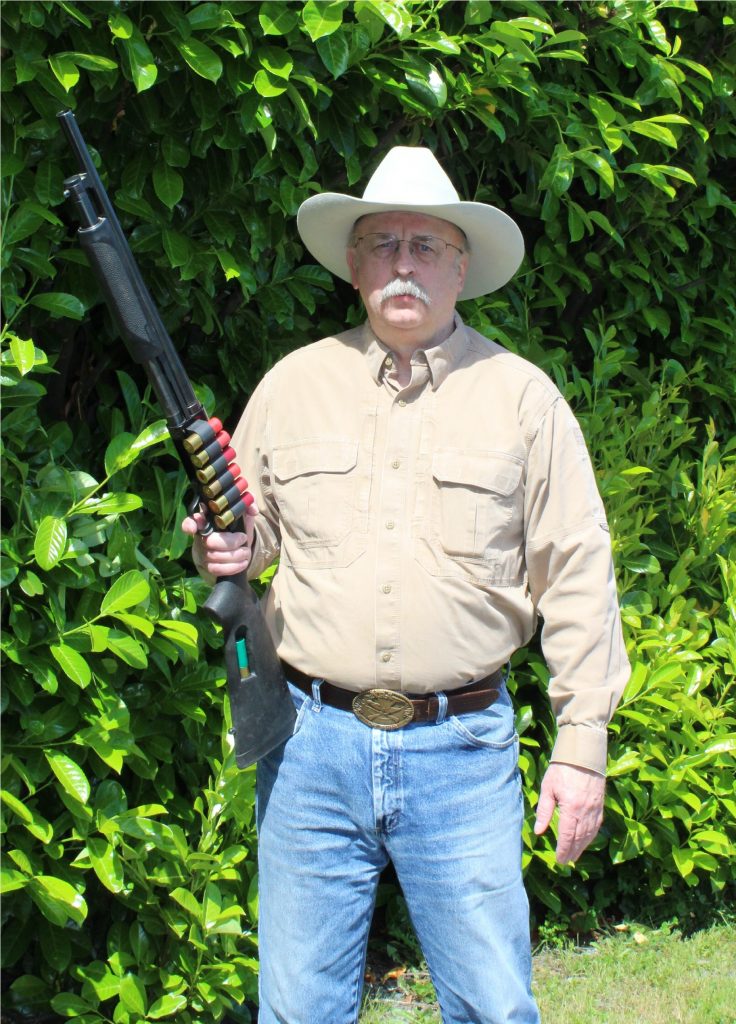
The Speed Feed stock that came with the gun at purchase holds four shells—two on each sides in crafty spring-loaded slots—so that with the magazine tube plug removed, I’ve got five rounds ready to rock and four in reserve.
A few years ago, the good folks at TacStar, a division of Lyman, came up with an accessory shotshell holder they call the SideSaddle. This thing is designed for mounting on the left side of a shotgun receiver, holding four or six additional shells. If you’re anticipating urban warfare, where you might need to grab a gun and move, with this accessory you’ll have 13 to 15 rounds of fight-stopping muscle, and by the time they’re gone, you will have made your point.
Upside Down Carry
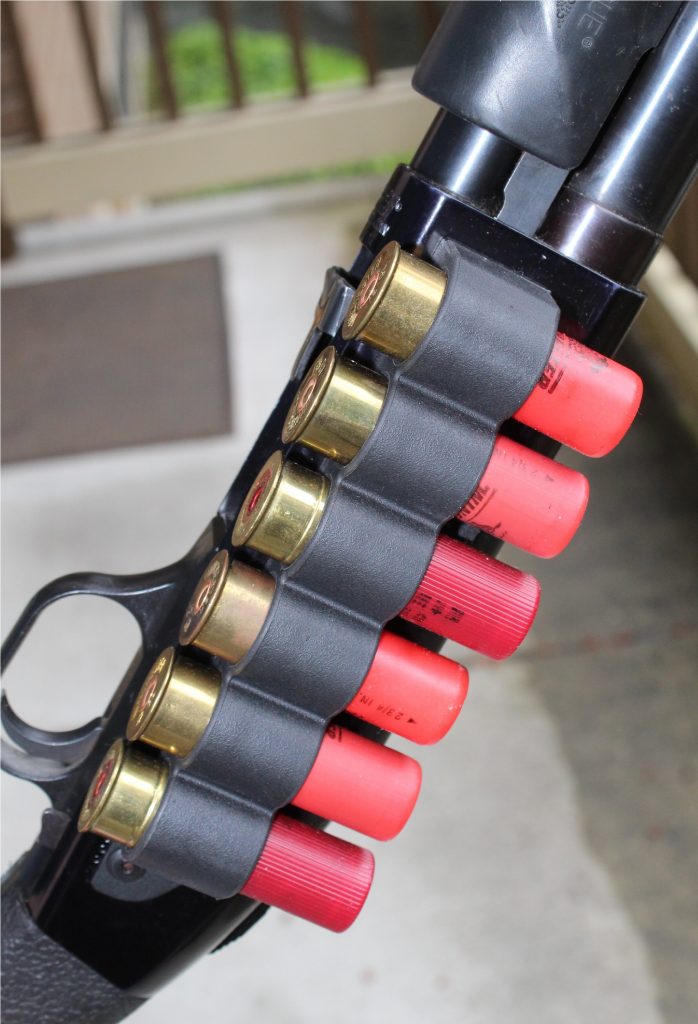
There are two ways to carry additional shells, and one is much faster than the other in terms of reloading the magazine tube.
Over the years, I’ve encountered several people who had SideSaddle or similar devices made from nylon and elastic or rigid synthetic that mounted with the use of hook-and-loop fasteners. Most of the time, the spare shells were carried with the base up, that is, the rim of the round was on top.
What happens when one needs to reload is a bit awkward because one has to push down on the shell first, grab it and then bring it up to the bottom loading port, which would be on the upside of the inverted firearm during the reloading process. That can slow you down, and that could be costly.
On my gun, the shells are carried with the bases down. During a reload, when the loading port is facing the sky, all that needs to be done is to pull a shell upward and shove it into the magazine.
I can save valuable seconds in an emergency, and that could be the game changer one needs to survive a potentially life-threatening encounter.
Easy Mounting
It is easy to mount the SideSaddle and it comes with the necessary parts, there’s a replacement base pin that consists of a two-piece screw-in-the-middle rod that secures the rear base, and a replacement screw to secure the upper base from inside the receiver. It takes about five minutes to do this procedure, slowly, and you do not want to rush the process. Do it right.
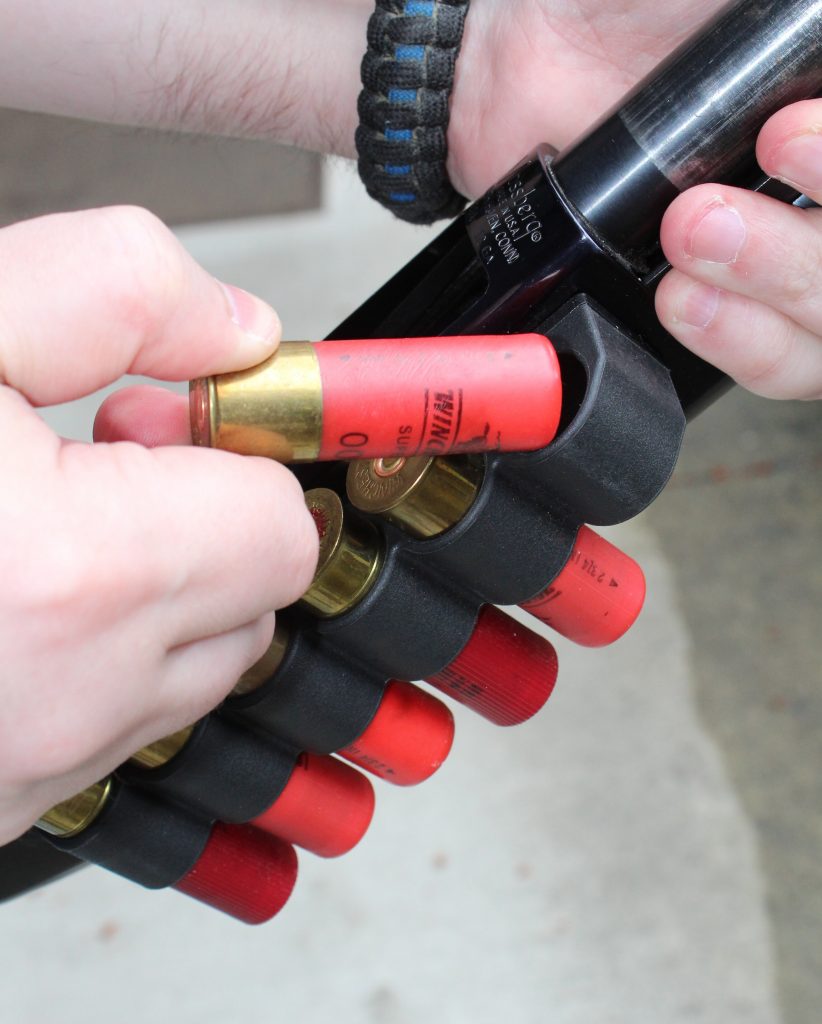
Because the SideSaddle is a synthetic, it’s impossible to screw this up unless you’re all thumbs. Being made from a synthetic, the SideSaddle is impervious to changing weather conditions.
It is flat and is almost weightless. The added weight of a half-dozen 12-gauge shells doesn’t really throw the gun out of balance. The construction of these things—mine is the SlimLine version—doesn’t scratch or mar the finish of the receiver, either.
Loading Up
There is no shortage of debate on proper loads for home defense. Some people insist on slugs or buckshot (00 or 000 of No. 4) while others might recommend BB, No. 2 or even No. 4 birdshot or even lighter shot, down to No. 6 or 8.
Note: No. 4 Buck is larger than No. 4 Bird, so don’t confuse the two.
At close range, say the distance across an average bedroom or living room, even a charge of birdshot is likely to be devastating because the shot column is only beginning to open up at that distance. There are more pellets, but they are less likely to penetrate a wall, while almost certainly penetrating deep into an attacker.
A string of buckshot will have opened up a bit wider out of an open choke, but it will still disable an attacker if not put him down for the count. The downside to buckshot or slugs is the likelihood of over-penetration. A slug or buckshot can pass through the target and penetrate the typical wall, or several walls, behind, potentially harming some innocent bystander.
My pal, Roy Huntington at American Handgunner, did an interesting video about the use of birdshot versus buckshot in a home defense situation. It can be viewed here in less than five minutes.
There have been several developments over the years in shotgun ammunition.
For example, Remington offers “Ultimate Defense” shotshells in 00 or No. 4 buckshot in 2 ¾- or 3-inch shells. Federal offers a 00 buckshot load in its Personal Defense family with a FliteControl wad. Winchester offers a nasty segmented slug in its Defender series, and another Defender load with a slug and three plated 00 buckshot pellets. All of these typically come five rounds per box.
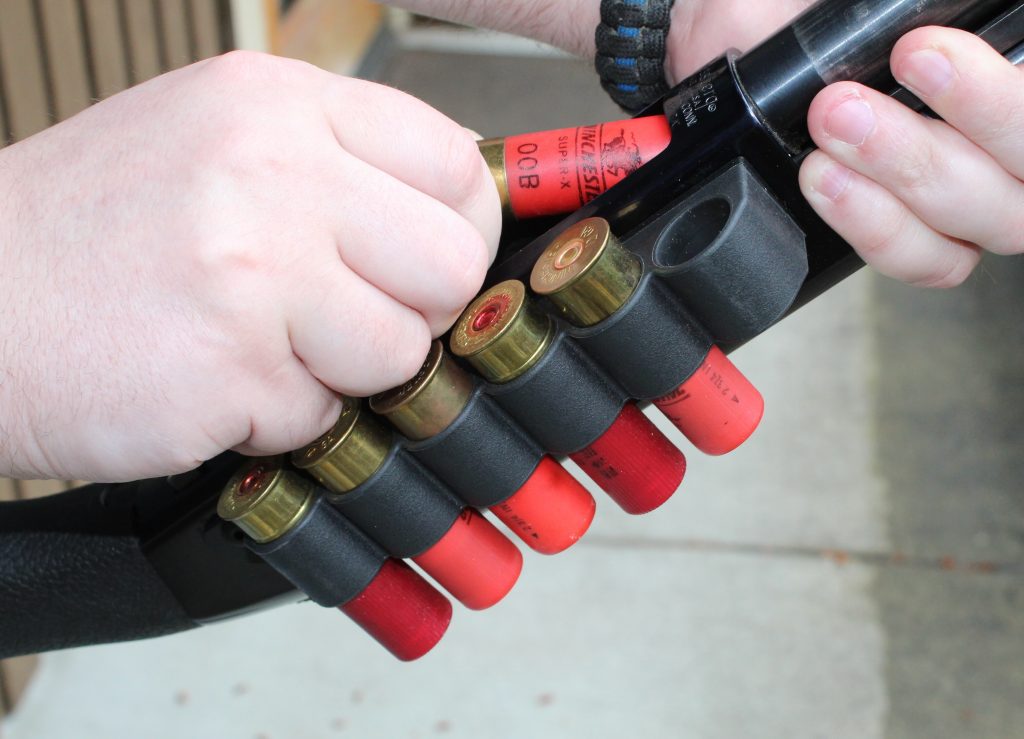
You do not want to be on the receiving end of any of these loads.
In my SideSaddle setup, I’ve got four buckshot loads and two slugs, positioned to go into the tube 2-and-1, primarily because in my neighborhood I know of at least one rather large black bear that has been seen over the course of a few years.
Do some experimenting and see what makes most sense, and don’t be swayed by some self-appointed expert with a fake name on the Internet.
Whatever strategy one eventually employs, the use of a shotgun for home defense is hardly an outmoded idea. In a situation of urban unrest, just the appearance of a shotgun can be an impressive deterrent to people who might have destructive intentions that have nothing at all to do with whatever issue they’re hiding behind. They just want to destroy something.
Ideally, one never needs to use a defensive shotgun, but in the event of an emergency, you’re going to want one that works, and you’re going to need it right now. Rather than rustle around in the dark looking for ammunition, with the SideSaddle and/or a Speed Feed stock, you’re all set.



